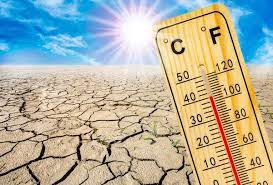
by Bill Schlesinger
“Too Darn Hot,” Cole Porter, 1948
In 1992, then Senator Al Gore hosted an informational hearing on climate change, where I was honored to participate. One of the highlights was a presentation by David Rind, a NASA scientist, who had modeled the future distribution of drought around the world. While the oceans absorb a lot of the heat on our warming planet, his model predicted that the generation of water vapor by evaporation from the oceans’ surface would lag behind the warming and drying of the land surface, creating hot, dry conditions over much of interior continental regions.
A new paper in the journal Geophysical Research Letters largely confirms this prediction. We are now entering an era of widespread hot conditions, seen in recent news reports from Phoenix to New Delhi, where air temperatures approach the upper limits for human survival (see Fire Burn and Cauldron Bubble – Translational Ecology (duke.edu)). Hot, dry conditions have led to Canadian forest fires of unprecedented areal extent. Regional episodes of particulate air pollution from forest fires are an indirect effect of global warming, with a direct effect on human mortality and morbidity from San Francisco, Austin, to New York.
Hot air can hold more water vapor than cooler air. An atmosphere with charged with water vapor, over a superheated land surface, leads to large, upward convective movements of air in the atmosphere, the formation of large storms, and thunderstorms. One can look to the recent patterns of “weird” weather, such as catastrophic flooding in Vermont, as an indirect effect of global warming of the planet. These observations correlate with the observation and prediction of more intense hurricanes. Overall, the land is drier, but when it rains, it pours.
So, 33 years after Gore’s Senate hearing, we are living in the hot, dry world that was predicted by computer models of the Earth’s climate. It was an inconvenient truth, denied as a hoax by many politicians on the right, who push for no action to curb the rate of climate change. If we listen to them, we are cooked.
References:
De Luca, P. And M.G. Donat. 2023. Projected changes in hot, dry, and compound hot-dry extremes over global land regions. Geophysical Research Letters doi: 10.1029/2022GL102493
Rind, D., R. Goldberg, J. Hansen, C. Rosenzweig, and R. Ruedy. 1990. Potential Evapotranspiration and the Likelihood of Future Drought. Journal of Geophysical Research—Atmospheres 95: 9983–10004.